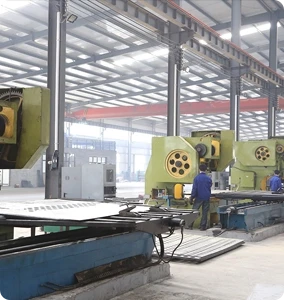Understanding Drain Board Construction A Comprehensive Guide
Drain boards are an essential component of efficient drainage systems, primarily used in landscaping, irrigation, and various construction projects. They play a pivotal role in managing excess water, preventing soil erosion, and protecting structures from water damage. This article explores the construction process of drain boards, their materials, functions, and various applications.
What are Drain Boards?
Drain boards, often referred to as drainage boards or drain mats, are typically flat panels designed to facilitate the flow of water away from specific areas. Constructed from various materials, they contain channels or grooves that guide excess water to drainage outlets, ensuring that the surrounding environment remains dry and stable. Their primary function is to prevent water pooling, which can lead to structural issues and landscape degradation.
Key Materials Used in Drain Board Construction
1. Plastic High-density polyethylene (HDPE) is one of the most common materials used in drain board construction due to its durability, resistance to chemicals, and flexibility. Plastic drain boards are typically lightweight and resistant to UV rays, making them ideal for outdoor applications.
2. Geotextiles These are permeable fabrics that are often used in conjunction with drain boards. They help filter out soil particles while allowing water to pass through, ensuring the drainage system remains effective. Geotextiles can also provide additional stabilization to the soil around the drain board installation.
3. Fiberglass Some drain boards are constructed from fiberglass, which offers excellent strength and durability. Fiberglass drain boards are particularly useful in applications where high tensile strength is required, such as in retaining walls or along slopes.
The Construction Process
Constructing a drain board involves several steps, which must be followed meticulously to ensure optimal performance. Below is a typical construction process
1. Site Assessment Before any installation, it’s crucial to evaluate the site. This includes analyzing the topography, soil type, and existing drainage conditions. Proper planning at this stage can prevent many future issues related to drainage.
drain board construction

2. Design Engineers or landscape architects design the drain board layout, taking into consideration the flow of water, the location of drainage outlets, and the overall aesthetics of the area.
3. Excavation The designated area for the drain board must be excavated to the required depth and width. This step is vital, as it creates a trench that ensures the board is positioned evenly, allowing for efficient water flow.
4. Installation of Geotextiles If geotextiles are part of the drainage system, they should be laid down first to prevent soil from clogging the drain board. This layer acts as a barrier to maintain the integrity of the drainage system.
5. Placement of Drain Boards The drain boards are then installed in the trench. Proper alignment and leveling are crucial to ensure effective water flow. Depending on the system's design, the boards may need to be connected or overlapped.
6. Backfilling and Compacting After the drain boards are in place, the trench is backfilled with gravel or soil, which is then compacted. This helps stabilize the drain board and enhances its effectiveness in managing water flow.
7. Connecting Drainage Outlets The final step involves connecting the installed drain boards to drainage outlets, such as pipes or rainwater harvesting systems. This connection ensures that excess water is directed away from the site.
Applications of Drain Boards
Drain boards are versatile and can be used in numerous environments. Some common applications include
- Landscaping To manage rainwater runoff and protect plant beds from oversaturation. - Road and Highway Construction To prevent water accumulation that could compromise pavement integrity. - Retaining Walls To dissipate hydrostatic pressure behind the wall, reducing the risk of water damage. - Green Roofs To facilitate proper drainage and prevent waterlogging, ensuring plant health.
Conclusion
Drain board construction is a critical facet of environmental management and civil engineering. By effectively channeling water away from critical areas, these systems protect landscapes, structures, and the ecosystem. Understanding the materials involved and the construction process can help ensure the installation of a reliable drainage solution that meets the specific needs of any project. Proper installation and maintenance of drain boards make them a worthwhile investment for long-term water management.
-
Versatility of Expanded Aluminum Metal for Various Applications
NewsMay.19,2025
-
The Geometry of Steel Gratings: Why It Matters
NewsMay.19,2025
-
Reinforcement Applications of Perforated Mesh in Masonry
NewsMay.19,2025
-
Essential Tools for Installing a Deck Mesh Railing
NewsMay.19,2025
-
Anti-Slip Flooring Made with Stainless Expanded Mesh
NewsMay.19,2025
-
Adjustable Steel Grating for Uneven Terrain
NewsMay.19,2025
Subscribe now!
Stay up to date with the latest on Fry Steeland industry news.

